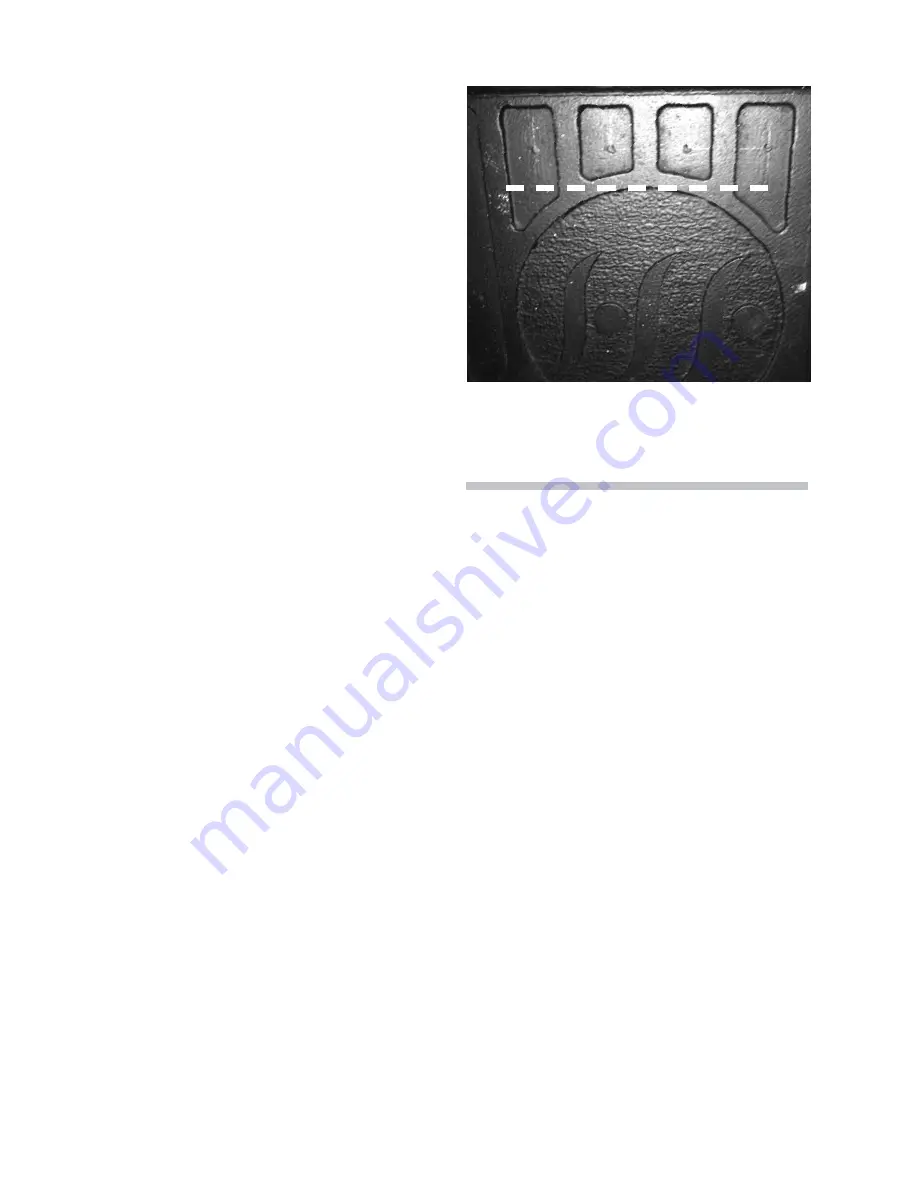
19
burn with a dull orange flame. Burning
the stove like this for a sustained period
will create unnecessary smoke and not
be good for the chimney or flue system.
1 The Lighting Phase
For best results:
Primary Air – fully open
Secondary Air – fully open
Door – slightly ajar (optional)
Avoid trying to light the fire with
excessive amounts of paper as this
has a very high ash content which can
‘smother’ the ash bed. If you have good
dry kindling or sticks then paper should
not be needed at all.
The size of the logs used at each stage
is also important. If the kindling wood is
too large this will not light well and will
be slow to get started. Two handfuls of
smaller pieces of kindling (equivalent
to the weight of typical log) layered in
a criss-cross or ‘wig-wam’ and a small
firelighter will get the fire well
established and up to operating
temperature quickly.
If you feel you have a weak chimney
draught, then keeping the stove door
slightly ajar for the first 10 – 15
minutes will assist, after which it should
be closed.
This will also help prevent the
build-up of condensation on the door
glass until the glass warms up,
especially if you have not used the stove
for a few days.
During the lighting phase the Primary
and Secondary air settings on the stove
should be fully open.
2 The First Refuel Phase
For best results:
After 10 minutes
Primary Air – close completely
Secondary Air – fully open
Door – closed
Once the embers are starting to glow
and the flames start to calm down the
first refuelling can take place. For this
stage use slightly larger pieces of wood
than the lighting wood – but smaller
than the main refuelling wood in the
next phase. The reason for this is that
the embers from the kindling wood are
small and will not hold a high
temperature for too long.
If unnecessarily large pieces of wood
are placed on the embers at this stage
and do not ignite well there is a risk
that the firebox will cool down and the
wood start to smoke. When the first
refuelling wood is burning well (say,
after about 10 minutes from the start)
the Primary air can be completely shut
off.
Maximum height of wood fuel load
Maximum fuel load: This should never be higher
than the lowest part of the logo circle in the
tertiary air plate at the back of the firechamber as
shown.
















































